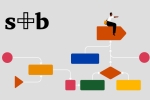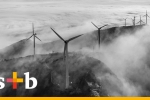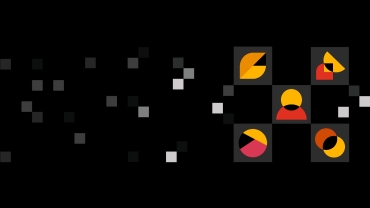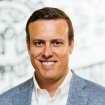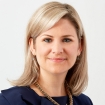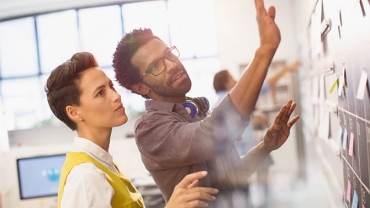
Episode 11: How is personalisation changing the workforce?
Subscribe to our podcast
The pandemic has revealed a number of different ways of working — chief among them, the remote model. Applying personalisation to the lessons of the past year, business leaders can create a curated work experience, boost engagement and productivity, and optimise the workplace for the individual.
PwC Global Crisis Leader Kristin Rivera and Human Sciences Employee Experience Leader Patrick Welsh dig into the exciting potential of workplace personalisation.
Release date: June 2021
Full transcript
Kristin Rivera: Welcome to our podcast series, Emerge stronger through disruption. I'm Kristin Rivera and I lead Global Forensics at PwC, as well as our Global Crisis Centre. I'm coming to you today from just outside San Francisco, California. In each episode of the series, we talk with global colleagues about the challenges facing business leaders during disruption.
And today I'm joined by Patrick Welsh, our Human Sciences Employee Experience leader, for a conversation about the personalisation of work. Last time we spoke with Bhushan Sethi, PwC’s Global People and Organisation leader, about the return to the workplace after more than a year of unprecedented disruption, which sparked, among other things, a complete re-imagining of work.
And today we'll continue with that theme, diving into the specifics of personalisation. But first, let me welcome Patrick.
Patrick Welsh: Thanks for having me, Kristin. I'm a bit biased, but I think I have one of the best roles in the firm. I'm a behavioral scientist and my job is to conduct innovative research, to transform the future of work at PwC and embed this learning into our client solutions.
And one of our key focus areas is on empowering personalized individual and team preferences and well being to enhance company performance. So really looking forward to our conversation today.
Kristin: I think collectively as a workforce, we seem to be at a crossroads. Fifteen months into this pandemic, all the rules are changing and there's no playbook.
Since the Industrial Revolution, really, things have remained the same to a pretty large degree. Everybody goes to work at roughly the same time. We sit in the same place. We take a lunch at roughly the same time, and then we go home. And we've retained many of the attributes of that work environment all the way to this day.
But during the past year, people around the globe have discovered, mainly through the necessity of working from home, that there are many different ways to work that are viable and that the workforce can, in fact, stay productive and engaged while working remotely.
So, we know now that we can work in a lot of different settings beyond the traditional office, that we can work at flexible times, and that we don't have to all be on from the same time in the morning, till the same time in the evening.
And from this new environment, this concept of personalizing work has emerged for both employers and employees. So, Patrick, this concept of personalisation, what does it mean from a workplace perspective?
Patrick: Thanks Kristin. So it's a topic I'm quite passionate about personally. And when we talk about the personalisation of work, it's really about the employers and employees understanding the ways of working that create the most productive, motivated, and successful individuals and workforce. It's about when, how, and where we work, and empowering employees to make personalised choices based on what's best for them, their effectiveness, their well being and work-life balance.
And so on.
Kristin: So why is it important to be talking about the personalisation of work right now, Patrick?
Patrick: I think one of the key reasons is around the competitive landscape. If you think, essentially, the new competition — it's no longer industry-based; it's experience-based. And that's going to affect your recruiting.
It's going to expand your competitive field. In the past, you might've recruited against your industry and other industries, but now you're really recruiting on experience. So employees — they're going to cut the world in a completely different way in the future. They're going to look and say, “OK, who has the best one place experience?
This is what my need is. This is what my preference is around, how I choose to experience work.” And so companies are going to be in a competition for talent in a completely new way that they haven't considered before. And if you think about streaming services for TV shows and movies and things like that, it's obviously something that's been a big part of my pandemic life, but those platforms are really good at knowing and suggesting how you should be consuming their content.
Right. And it's personalized. Kristin, you get a different suggestion than I do, but essentially what we're doing is we're primed to expect this type of recommendation in our lives. What you're seeing is we should be and will be receiving those types of recommendations for how we choose to consume work in the future.
Much in the same way that we consume TV shows, e'll be thinking about how we consume work. And the question then is, What measurement is most useful in the consumption? Is it well being? Is it engagement? All that kind of stuff. But that's kind of where we're heading with this now.
Kristin: So honestly, that's sort of mind blowing that — even the words that you're using, how we consume work, thinking about work as a parallel to entertainment, but I do believe that is the future that lays ahead of us. But it's a pretty novel concept, I think, for many to begin to think about work in that way. So, as I mentioned earlier, many of the workplace structures that we've become accustomed to have been in place for over a hundred years.
And now the pandemic has shown us that there are other ways to do it. Different settings, different hours. We can work from home in our pajamas, or at least our pajama bottoms. And we don't have to take lunch when the whistle blows at noon. There's way more choice than we've ever had before. So the trick is how do we make the shift? Or perhaps more specifically, how do we make the shift stick?
I guess many of us, I think, we're going to have to crawl before we walk or run.
Patrick: I think that's a great analogy for this journey, Kristin, and we've known each other a long time, and you're always really good at taking these concepts that I'm thinking about and ideating about and playing with the lab and researching, and turning them into just easy-to-consume-and-understand things. So if we stick with that and we carry that forward: So if we're in the crawl stage right now, companies, I would say, basically have two options. You can work from home or you can work in the office. That's the extent of personalisation, right? It's a fairly black-and-white sort of thing, but that's the crawl version of personalised work.
Kristin: In many businesses in the US, this remote work model has been an option for a fairly long period of time and it's relatively ingrained. In other parts of the world, though, the pandemic forced companies to practice this model for the first time. And I spoke with leaders at the outset of the pandemic, who did not believe that if they couldn't see their workers, that they would continue to work.
And I think at the end of the day, we learned that in fact productivity increased for many companies once the workforce began working remotely. And so there are organisations that really kind of feared this move towards flexibility and are crawling towards it. But now I think, again, we have proof that offering multiple models can actually make some workers more productive and your organisation more successful overall.
And we saw this demonstrated in our most recent Global Crisis Survey, which was just released this past March. Business leaders in overwhelming numbers said that the number one action they took as part of the pandemic was to focus on the wellness of their workforce. And moving to a remote model was a big part of this effort.
Patrick: Right. And I think when you think about that walk stage, there's a lot more variables, right? So if we move away from just location preference, you can really start to get a nuanced variety of preferences amongst both employees and employers. And that starts to bring in a team preference, as well. So in this stage, organisations recognise that they've more than two types of people, you know, number one, the in-office people and number two, the out-of-office people.
And we can look at creating different personas by different styles for our workforce and their needs.
Kristin: So at my kid's school, they call the in-the-office or the in-the-school people, the Roomers and the work-from-home people, the Zoomers. And it's really interesting because the kids who are in the classroom feel as if the teachers are really catering to and focusing on the people who were remote still.
And it just, I think, calls out this issue that, first of all, we need to really be focused on how we interact with those different groups and maybe even the preferences that certain teams are getting. But it also calls out the fact that there really needs to be room for more than just those two black and white models.
So Patrick, you and I did some research together last year in conjunction with our Digital Transformation and Innovation Center at Carnegie Mellon University that I think sheds some light on this conversation about the different models of work and the preferences that people have. Can you walk us through what we found?
Patrick: It was a very interesting study. We looked at a thousand knowledge workers and I think that's something also we should point out here as well: that there’s divergent degrees around that this will be adopted based on the type of work you do, right? But we looked specifically at knowledge workers, and what we were trying to understand was, what was most predictive of their work preferences?
Like, how would they consume work in the future? And so we tested them on a number of different ways that you could consume work along with the infrastructure that would be required to support that. So let me give you a few examples. We might've tested: Would you work from a co-working space? Would you work from a global satellite office of a company that's not, you know, you, you sit in one aspect of the company, but you work globally in another office? Or you remote hotel, or you're a digital nomad or a variety of different things there. And we then tried to figure out what was most predictive of how people would consume work. So we used an algorithm that essentially looked at what was generating the preference of the employee.
And we found things like personality, things like the rate of change that people had in their lives. One example being, we actually calculated a positive and negative impact from COVID score on someone's life, because some people were thriving,and they had a bunch of positive changes. And then some people, unfortunately, might've lost loved ones or had personal tragedies associated with this.
And we really look to try and understand who had what preference around the work, and then also how sticky that preference was. Cause you can think of: If you're in a high state of uncertainty, your preference may not stick. It might be something I say today, but I'm really just trying to get out of what I feel today versus something that's a little more of a reliable preference.
So we did some analysis on that as well.
Kristin: That would be like a working mom, perhaps, who has some young children at home, so would very much like to be in an office. But once school resumed, working from home might be, again, a preference.
Patrick: Exactly. And I think we also saw interesting things around the degree of conscientiousness that people had, which is one of the personality measures, the degree of neuroticism, the level of support that they felt from their team leaders essentially canceled out any sort of preference.
Which you know, is a big cultural and inclusion type of thing I think that needs to be discussed around future work, but yeah, it's a really nuanced type of persona that can be developed. And so it needs to be thoughtfully developed, like you pointed out. It can be home and in office Roomers and Zoomers — I love that.
I'll use that from now on. But I think what we have to do is look at — what are the options from the employer perspective? Like what are the things that, you know, the employer needs to get out of this agreement, then what are the things that the employee prefers and gives them a sense of autonomy and engaged purpose at work and well being, and all of that.
Then we need to thoughtfully find where these intersect.
Kristin: So I take from your comments, Patrick, and the research that we did, that business leaders now really need to consider the personality types, the personas of their workforce, in order to create a broader spectrum of experiences, because we know that there's not just one or two categories of employee — Roomers or Zoomers.
And we now have the ability to capture that information and to optimise the work experience, and by extension the productivity of our workforce, as well.
Patrick: Yeah. I think that's a great point. And you can almost think of them as building blocks. And what you can think of, if they're kids building blocks and we're putting them together, personality maybe gives me one certain level of predictiveness, and then I can get into another level of predictiveness if I add on cognition and if I add on your risk preferences, all of that sort of stuff. So you can get a very nuanced and predictive view of what drives employee preference. It starts to move us towards questions around ethics, data privacy, what are the employers doing with this data? What's the employer-employee value exchange, that kind of stuff.
So those questions are under development right now. And we're talking about the ethics of this stuff currently.
Kristin: So Patrick, we've definitely seen all of this come to life in the past year. And we've talked about the crawl phase, which is this sort of black or white Roomers or Zoomers. And then we talked about the walk phase, where you begin to realise that there are more personas, more archetypes of work beyond just those two choices.
But I'd like to talk for a little bit about the run stage, because there are ways, and there are organisations out there that are already starting to make work truly personal all the way down to the individual level. But I expect that many of our listeners have a hard time envisioning what this could look like.
So you're the visionary, Patrick. Walk us through this potential future state of what the workplace experience could look like, say, five years from now.
Patrick: If you think back to the rise of the tech industry, tech got it early on, and what they, yes, they were competing on product and way of working But they were essentially competing on offering a personalised experience at work.
It just happened to be in a physical location. And then they also started offering some flexibility around in office or out of office, all that kind of stuff. But that's all kind of now in the walk stage, now that we're all looking at essentially virtual and hybrid work as the mechanism of the future of work.
So the run stage is really all about data. And we have so many ways to use the data, to identify what employees want and how we can predict and personalise their preference. We can start to use this data in a more specific, more sophisticated way to personalise workplace design — and not just the design, but actually the day-to-day experiences within work.
So let's take an example: coffee chats. That's one of the top areas that I hear that is missing in the future of work. And it's why we all need to be back in the office right away. I mean, yes, we are missing the watercooler moments, but we're missing the efficiency of how they're conducted. So if you think of this as analogous with online dating: Now, a third of marriages come from online dates.
And research shows that they're actually stronger. So is it better to go into the bar, restaurant, whatever, as it were, trying to hopefully meet someone? Or is it better to understand their preferences, understand my preferences, see how they compare, and then exchange and create a more probabilistic, a better, enjoyable experience from that interaction when we actually do go on the date?
Kristin: So you're saying, Patrick, that we could borrow some of these concepts, say, from online dating and bring them to the workplace. So it sounds like what you're predicting is a couple of years from now, I might choose to go into the office in person say twice a week. And on those days an algorithm might say, okay, Kristin.
We see that you have 30 minutes after lunch, and we've scheduled for you a meeting with someone who has similar business interests, but with whom we know from your emails and calendar, you have never met before. And it might use that same predictive intelligence that the dating apps use to find a match for me, which would be far more efficient than just hoping that that person and I happened to be in the coffee room together at the same time and might meet by chance.
Patrick: I think that's exactly right, Kristin. And of course this all requires a high degree of thought with data privacy, ethics, and a host of other considerations. But I kind of liken it to autonomous driving:
The tech might be there before the willingness to use it is, and the trust in the underlying technology, as well as the ecosystem surrounding it. Things like, you know, insurance and legalities and all that kind of stuff. But obviously we have to connect it to the office system and you have to, there's a bunch of data behind the scenes that you have to pull in, but technologically it's feasible.
We can do these things today and for sure companies are already thinking this way. And, in fact, we are as well. So PwC, we did a study of a thousand employees, voluntary opt-in study, studying the impact of stress, cognition and a person's environment on their well being. And there's been amazing insights and utility to both the individual and PwC, so we can help people be their best.
And I'm really excited. We're on our way.
Kristin: So that really takes personalisation to even a new level, using individual biometric data, to help an individual understand how they can function at their very best is definitely forward-looking. And it really helps me to see what may come ahead in the years to come. So, Patrick, thank you so much for joining us today.
This was a fascinating conversation. Remember to subscribe to our podcast series, Emerge stronger through disruption, wherever you get your podcasts. And don't forget to connect with Patrick and me on LinkedIn. Until next time, thanks for listening.








